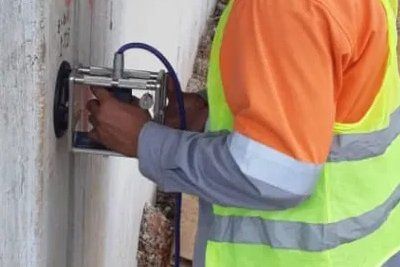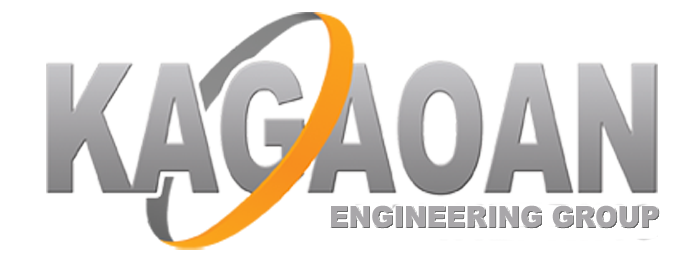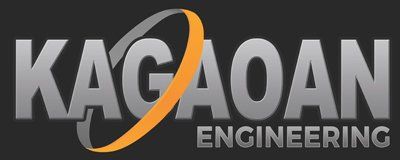Tiltmeters and Extensometers Consultants - NYC, Manhattan, The Boroughs, Nassau County, Suffolk County, Long Island, and New Jersey - Kagaoan Engineering

Tiltmeters and Extensometer Consulting
What is a Tiltmeter?
What is an Extensometer?
This equipment gives ratings of the strength of a material when it is under a load. Tensile strength is the technical term for this test. The device can provide several readings, including the lengthening of the yield point, strain ratios, and other elongation numbers.
People may hear a variety of terms for these meters. Sometimes, construction or engineering crews use phrases that reflect the material the meter is testing, while other times, the names refer to the way the extensometer operates. Each device uses the sensor differently, although they work for the same purpose.
Types of Extensometers
- Soil - Tracks changes in the ground using a PVC pipe that covers a wire with sensors and other materials for detecting vibrations. The pipe protects the wire and keeps water away from the testing components.
- Automated - Instead of using digital readouts to determine the soil changes, this unit uses a mechanical dial with an analog display. Most of this equipment is adaptable, allowing engineers to convert it to an electrical readout with wire monitors.
- Magnetic - This style of device tracks changes in the soil. Magnets sit in place above a tube. Sensors track the magnetic changes by measuring how far away the magnets move away from the original position. These measurements help detect soil movement in embankments, dams, retaining structures, concrete, and other buildings.
- Electric - This measuring device is often useful in conjunction with anchors and other extensometers to provide several points geotechnical engineers can use to monitor movement at underground construction sites.
- Borehole - This term means the hole the engineers drill to insert testing devices, check soil composition, and take samples for water checks. Extensometers can go into any angle borehole, including up.
- Measuring - They usually call this item an anchor or rock bolt. This tool is a combination item that uses an extensometer and a rock bolt. Basically, it tracks the bolts' loads to ensure there is not a failure at that point.
- Multi-positional - The single model of this extensometer checks three points for movement. The multiple extensometers allow for measuring six separate areas inside a borehole as small as 100 millimeters.
- Electronic - These units are similar to soil extensometers. They are useful for checking soil displacement, and they use the same vibrating wire as a mechanical extensometer. The thing that sets electronic devices apart from mechanical ones is they have the power to put the sensor in precise locations. These sensors go directly into boreholes to measure changes in small areas. They use a metal or fiberglass tube to protect the wire.
Tiltmeters and Extensometers Uses in Construction
There are many helpful ways these tools are essential in the civil, engineering, and geotechnical fields. From checking soil conditions to monitoring building settling and tracking how blasting or digging affects the ground and other structures, these tools are necessary measuring devices. While there are several different types and styles of tiltmeters and extensometers, the primary characteristic is that they allow engineering and construction teams to look inside structures and soils.
The Difference Between Extensometers and Tilt Meters
The Tiltmeter checks how much a particular soil or structure moves around the vibrating wire. The extensometer measures the strain between two non-movable points, giving it another name users might recognize, the strainmeter. Civil entities and construction crews use these items together to provide them with a three-dimensional view of the object or target area. The data from these sensors provide a wealth of data geotechnical and civil engineers use to make decisions about projects and proposals.
Tiltmeters allow for predicting soil and structural changes. Engineers need to monitor these figures to help them find out if a tunnel might fail, a dam is experiencing too much pressure from external forces, and whether an underground structure is in danger of collapse. Consultants in this field are often engineers who have extensive education and hands-on training to help them learn how to set-up and use these extremely sensitive devices.
Extensometers track a different force than tiltmeters. These devices use two points and track the pull between the two. They measure the movement in the ground in terms of strain force instead of rotational changes. Excavating, blasting, construction, and other forms of stress on the soil or nearby structures pose potential problems from cracks to settling and failure.
Extensometer consultants use both tools to give them a clearer baseline to guide future operations. They also use the data from these tools to protect people working in and around sensitive areas. These tools help the professionals determine potential issues, giving them time to develop a secondary plan to combat the problem.
Extensometers and tiltmeters help with pre-construction, building, tunneling, and long-term monitoring. Our team at Kagaoan Engineering works with builders, developers, civil engineers, and other professionals to develop a monitoring plan that meets or exceeds site needs. With decades of experience, a vast team of professionals, and immense local expertise, our team understands the unique challenges any construction project presents.
To schedule extensometer or tiltmeter testing or find out more about our services, please contact Kagaoan Engineering for a free consultation at 516-208-1533. We proudly serve the Tri-State area.
Please contact us today!

